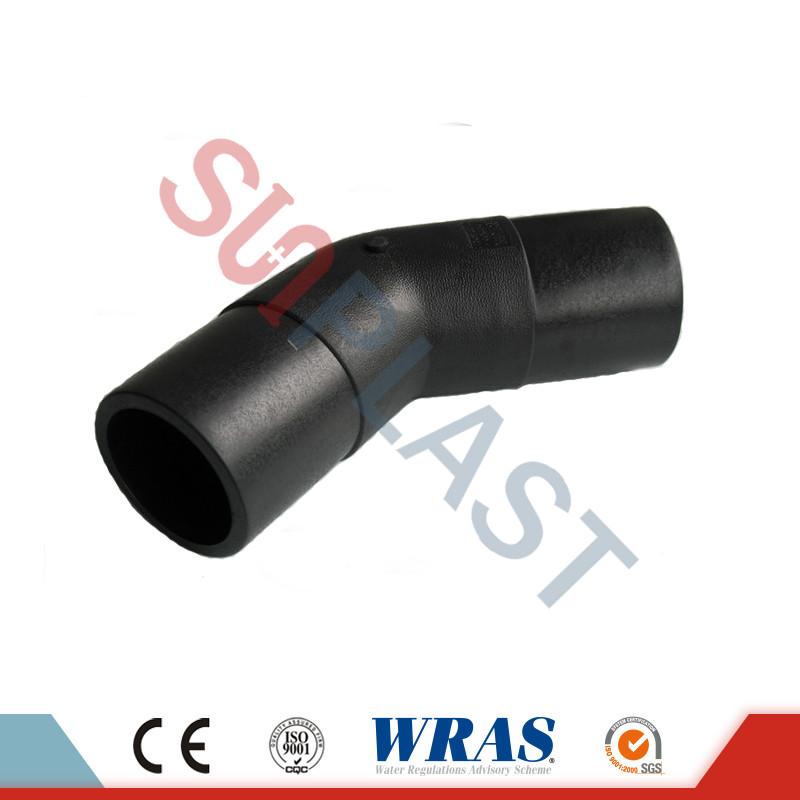Navigating Precision: The Preferred Choice of 22.5-Degree Elbows in Piping Configurations
2024-01-25
Introduction:
In the intricate landscape of piping systems, the selection of fittings plays a pivotal role in achieving optimal functionality and efficiency. Among these fittings, the 22.5-Degree Elbow emerges as a preferred choice in certain piping configurations due to its specific features and benefits. Let's delve into the characteristics that make the 22.5-degree elbow the go-to solution for precision in piping design.
1. Controlled Directional Change:
- The primary feature that sets the 22.5-degree elbow apart is its ability to introduce a controlled directional change in the piping system. In scenarios where a subtle bend is required without a drastic alteration in flow direction, the 22.5-degree elbow excels. This controlled change aids in maintaining fluid flow efficiency.
2. Gentle Curves for Optimal Flow:
- Unlike sharper bends, the 22.5-degree elbow introduces a gentle curve in the piping layout. This design minimizes turbulence and pressure drop, ensuring that fluid flow remains smooth and efficient. The gradual curve reduces the risk of eddies and disturbances in the flow path.
3. Spatial Optimization:
- Piping configurations often encounter spatial constraints, whether due to equipment layout or infrastructure design. The 22.5-degree elbow's compact design allows for spatial optimization, enabling pipes to navigate around obstacles or fit into confined spaces without compromising performance.
4. Versatility in Design:
- The versatility of the 22.5-degree elbow lies in its adaptability to diverse piping configurations. Whether it's a water distribution network, industrial processing plant, or gas transmission system, this elbow offers a versatile solution for introducing subtle directional changes.
5. Alignment Precision:
- Maintaining precise alignment in piping systems is crucial for optimal performance. The 22.5-degree elbow facilitates precision in directional changes, ensuring that pipes align seamlessly with equipment or other piping components. This alignment precision contributes to overall system efficiency.
6. Stress Reduction:
- In situations where abrupt directional changes could lead to stress concentrations on the pipe, the 22.5-degree elbow provides a more gradual curve. This helps distribute stress evenly along the pipe, reducing the risk of structural issues such as distortion or fatigue.
7. Aesthetic Considerations:
- In certain applications, aesthetics play a role in the design of piping systems. The 22.5-degree elbow's subtle bend adds a level of visual appeal to the configuration, making it an attractive choice for applications where design aesthetics are a consideration.
8. Integration with Butt Fusion Technology:
- The 22.5-degree elbow seamlessly integrates with Butt Fusion technology, a welding process that ensures a strong, leak-free connection. This compatibility with fusion welding adds to the overall reliability of the piping system.
9. Customizable Solutions:
- Manufacturers often provide customizable options for the 22.5-degree elbow, allowing for variations in size, material, and end connections. This customization ensures that the elbow can be tailored to specific project requirements, enhancing its suitability for diverse applications.
Conclusion:
The 22.5-Degree Elbow emerges as a preferred choice in certain piping configurations due to its unique features that cater to precision, efficiency, and adaptability. Whether navigating spatial constraints, optimizing fluid flow, or ensuring precise alignment, the 22.5-degree elbow stands as a versatile and valuable component in the intricate symphony of piping design. As industries continue to prioritize efficiency and functionality in their fluid transport systems, the 22.5-degree elbow remains a reliable and preferred choice for achieving precision in directional changes.



